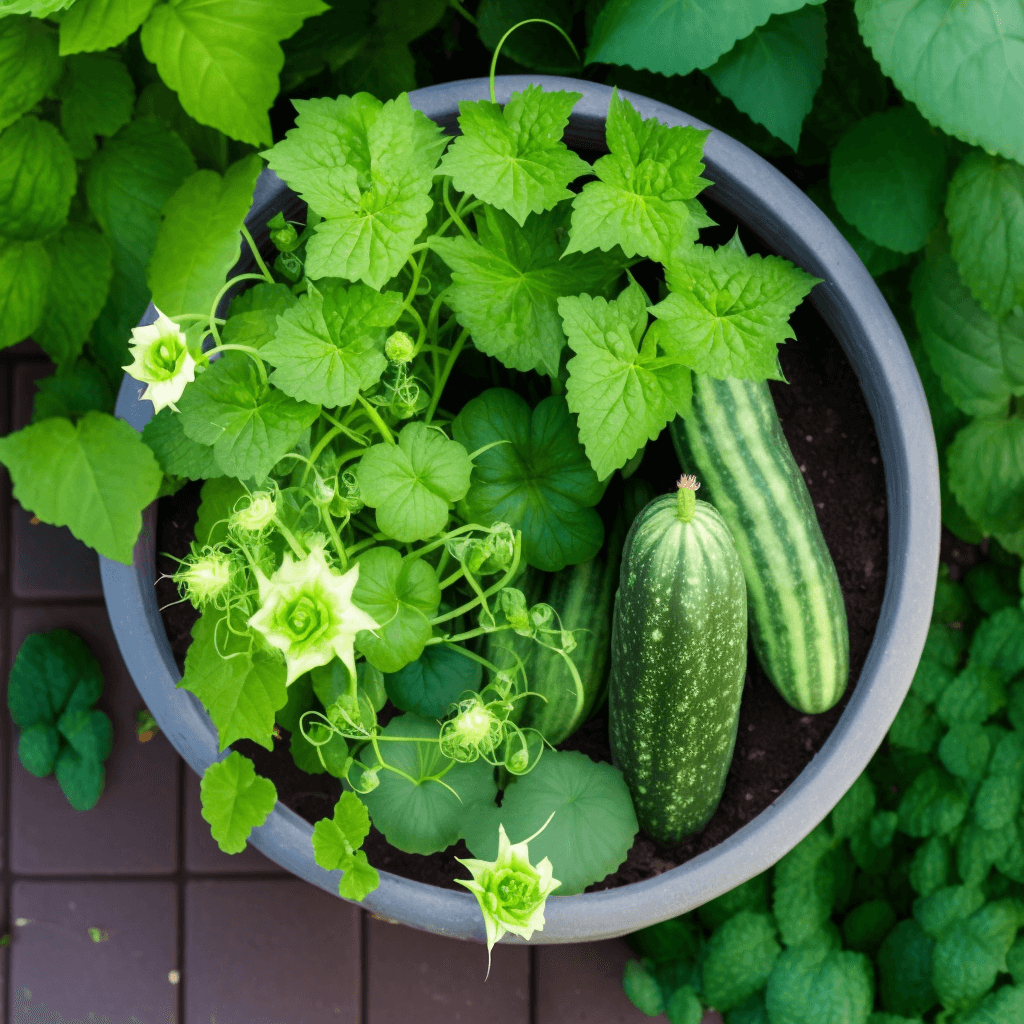Do you want to grow fresh cucumbers but don’t have the luxury of a large backyard or garden? Fear not, because container gardening is a great solution for those who want to grow vegetables in small spaces. In this article, we’ll go over the basics of cucumber container gardening and share some tips for success.
Choosing the Right Container
The first step in cucumber container gardening is choosing the right container. Cucumbers need a lot of room to grow, so it’s best to choose a large container that is at least 18 inches in diameter and 12 inches deep. The container should also have drainage holes to allow excess water to drain out.
You can use a variety of containers for cucumber container gardening, including plastic pots, wooden boxes, or even recycled containers like buckets or barrels. Just make sure that the container is sturdy and able to support the weight of the growing cucumber plant.
Selecting the Right Soil
The next step in cucumber container gardening is selecting the right soil. Cucumbers prefer a well-draining soil that is rich in nutrients. You can create your own soil mix by combining equal parts of peat moss, vermiculite, and perlite.
If you don’t want to create your own soil mix, you can also use a pre-made potting mix that is specifically formulated for vegetables. Just make sure that the potting mix is free of any harmful chemicals or additives that could harm the cucumber plant.
Planting Cucumber Seeds
Once you have your container and soil ready, it’s time to plant your cucumber seeds. You can either start your cucumber seeds indoors or directly in the container.
If you choose to start your cucumber seeds indoors, you’ll need to plant them in small pots or seed trays about 3-4 weeks before the last expected frost. Once the seedlings have developed their second set of leaves, you can transplant them into the container.
If you choose to plant your cucumber seeds directly in the container, make sure to plant them about 1 inch deep and 2-3 seeds per hole. Once the seeds have germinated, you’ll need to thin them out to one seedling per hole.
Caring for Cucumber Plants
Cucumber plants require regular watering to keep the soil moist but not waterlogged. It’s best to water them deeply once or twice a week, depending on the weather conditions.
Cucumber plants also require a lot of sunlight, so make sure to place your container in a sunny location. If you’re growing cucumbers indoors, you can use a grow light to provide the necessary amount of sunlight.
To encourage healthy growth, you can also fertilize your cucumber plant every 2-3 weeks with a balanced fertilizer. Just make sure to follow the instructions on the fertilizer package to avoid over-fertilization.
Harvesting Cucumbers
Cucumbers typically take about 50-70 days to mature, depending on the variety. You’ll know that your cucumber is ready to harvest when it reaches its full size and has a bright green color.
To harvest your cucumber, simply use a pair of sharp scissors or pruning shears to cut the cucumber from the vine. Be sure to harvest your cucumbers regularly to encourage new growth and prevent the plant from becoming overcrowded.
Common Problems in Cucumber Container Gardening
Like any gardening endeavor, cucumber container gardening can be subject to a variety of problems. Here are a few common problems and how to avoid them:
Pests
Cucumber beetles, aphids, and spider mites can all damage your cucumber plants. To avoid pests, make sure to keep your container clean and remove any dead leaves or debris that could attract insects. You can also use natural pest control methods such as neem oil or insecticidal soap to keep pests at bay.
Diseases
Cucumber plants are susceptible to a variety of diseases, including powdery mildew and downy mildew. To prevent disease, make sure to keep your plants well-ventilated and avoid watering the leaves. You can also use fungicides to prevent the spread of disease.
Overcrowding
Cucumber plants can quickly become overcrowded, which can lead to stunted growth and poor yields. To prevent overcrowding, make sure to thin out your seedlings and harvest your cucumbers regularly.
Benefits of Cucumber Container Gardening
Cucumber container gardening has many benefits, including:
- Space-saving – Cucumber container gardening is a great option for those who don’t have a lot of space for a traditional garden.
- Easy to manage – Container gardening allows you to easily manage your plants and control their environment.
- Fresh produce – Growing your own cucumbers allows you to enjoy fresh, pesticide-free produce right at home.
- Saves money – Growing your own cucumbers can save you money compared to buying them at the grocery store.
Conclusion
Cucumber container gardening is a great way to enjoy fresh produce even if you don’t have a large garden. By choosing the right container, soil, and seeds, and providing your cucumber plants with the proper care, you can enjoy a bountiful harvest of delicious cucumbers. So why not give it a try and start your own cucumber container garden today!

